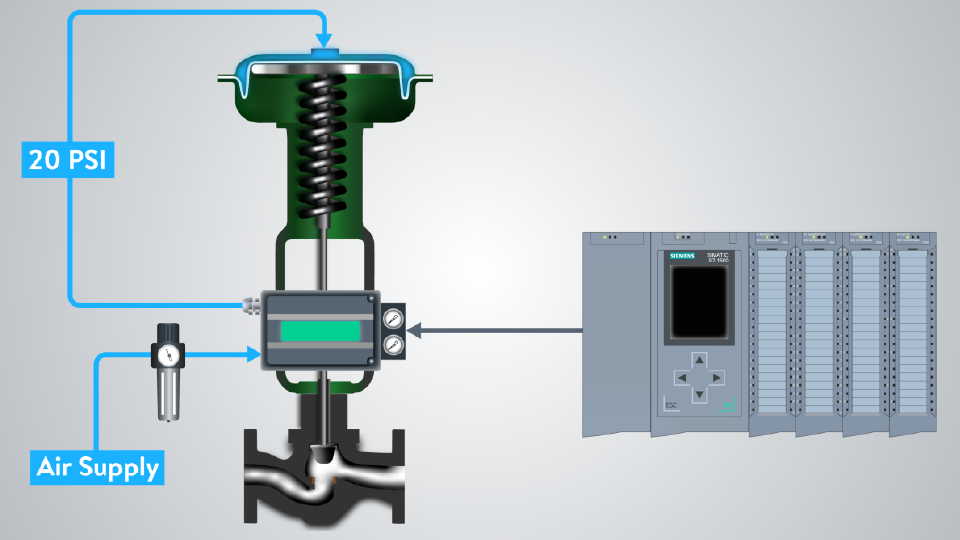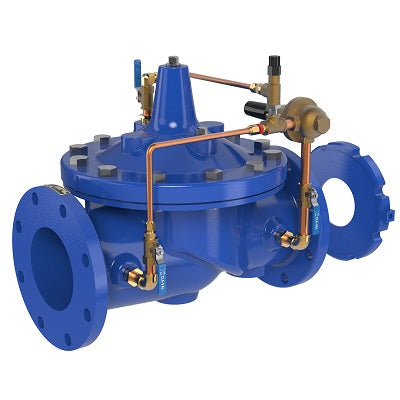Efficient Control Valves: Key Parts for Effective System Monitoring
Efficient Control Valves: Key Parts for Effective System Monitoring
Blog Article

Maximize Power Savings and Convenience With Advanced Structure Automation Controls
In the realm of modern design and center management, the combination of advanced structure automation manages stands as a crucial innovation. The merging of innovation and sustainability has birthed a brand-new age where energy efficiency, convenience optimization, and operational streamlining are no much longer far-off goals yet obtainable realities. By taking advantage of the power of automation, buildings can adapt, respond, and advance in means that were as soon as unimaginable. The potential for considerable power cost savings and boosted convenience is not just a possibility yet a promise waiting to be satisfied. This standard change in structure management holds the crucial to opening a globe where ecological conscientiousness and resident well-being sympathetically coexist within the wall surfaces of our frameworks.
Energy Efficiency Conveniences
Power performance advantages can significantly lower power usage and functional expenses in buildings. By executing energy-efficient techniques and technologies, structure owners and drivers can attain considerable savings while likewise adding to environmental sustainability. One of the key advantages of improving energy effectiveness in buildings is the reduction of utility expenses. Energy-efficient systems, such as sophisticated structure automation controls, can maximize making use of resources like lighting, air conditioning, and home heating, bring about lower energy costs over time.
Additionally, boosted energy effectiveness can prolong the life-span of structure equipment and systems. By operating more efficiently, heating and cooling systems, lighting fixtures, and various other building parts experience much less wear and tear, leading to minimized upkeep and replacement prices. Furthermore, energy-efficient structures usually regulate higher residential property worths and rental rates, offering lasting monetary benefits to owners.
Additionally, power efficiency can boost resident convenience and performance. Appropriately regulated indoor atmospheres with optimum lighting and thermal conditions create an even more pleasant and favorable work space, bring about boosted staff member satisfaction and efficiency. On the whole, the energy efficiency benefits related to sophisticated building automation controls are complex, including expense financial savings, environmental stewardship, and resident wellness.
Improved Comfort Control
Enhancing comfort control in structure settings needs a sophisticated integration of sophisticated automation systems for ideal resident health. By using innovative building automation controls, facilities can tailor the indoor environment to satisfy the specific demands and choices of owners. control valves.
Improved comfort control exceeds basic temperature level changes. It includes functions such as customized setups, occupancy sensors, and all-natural light usage to produce a vibrant and receptive setting. By integrating these innovative controls, structures can not only boost convenience however additionally enhance energy performance by enhancing system operations based upon real tenancy and usage patterns. Ultimately, prioritizing owner convenience via advanced automation systems leads to a more satisfying and healthier indoor atmosphere.
Operational Effectiveness Improvements

Furthermore, the execution of real-time monitoring and analytics devices allows structure drivers to determine power inefficiencies and functional anomalies quickly. By continually keeping track of power use patterns and system efficiency metrics, changes can be made in real-time to optimize energy intake and ensure peak functional performance. control valves. Furthermore, incorporating demand feedback techniques into structure automation controls can better improve operational performance by dynamically readjusting energy usage based upon grid conditions and rates signals
Indoor Climate Optimization
Effective indoor climate optimization is a fundamental aspect of building automation controls, making certain residents' convenience and wellness while maximizing energy financial savings. By making use of sophisticated sensors and controls, building automation systems can continually adjust and keep an eye on temperature, moisture degrees, air high quality, and ventilation to create an optimum indoor setting. Preserving constant and comfy problems not just boosts owner complete satisfaction however likewise improves performance and total well-being.
Indoor environment optimization additionally plays a critical role in power efficiency. By fine-tuning cooling, ventilation, and heating systems based on real-time information and occupancy patterns, developing automation controls can dramatically reduce energy usage - control valves. Applying techniques such as demand-controlled ventilation and thermal zoning can see it here aid lessen energy waste while making sure that each location of the structure receives the required conditioning.

Lasting Setting Production
Building automation regulates not only optimize interior climate conditions for energy effectiveness and resident comfort click this link but additionally lay the structure for developing a sustainable setting via calculated administration of systems and sources. By integrating sophisticated structure automation modern technologies, such as sensing units, actuators, and intelligent software, centers can monitor and readjust power use in real-time to lessen waste and lower their carbon impact. These systems make it possible for anticipating upkeep, identifying prospective concerns prior to they intensify and maximizing equipment performance to boost durability and performance.
Furthermore, lasting atmosphere creation extends past power management to encompass water preservation, waste reduction, and interior air top quality improvement. Building automation controls can regulate water use, spot leakages, and make certain proper garbage disposal practices, adding to overall sustainability initiatives. Furthermore, by keeping an eye on and regulating air flow and purification systems, these technologies boost owner health and wellness and performance while reducing power usage connected with heating and cooling operations.
Verdict
Finally, progressed building automation regulates offer significant benefits in regards to energy cost savings, convenience control, functional efficiency, indoor climate optimization, and developing a sustainable setting. By carrying out these controls, structures can achieve optimum efficiency while minimizing energy consumption and enhancing occupant convenience. It appears that the usage of advanced automation technology is vital in boosting building performance and developing an extra sustainable future.
Energy efficiency benefits can substantially lower power intake and functional prices in structures. On the whole, the power effectiveness advantages associated with innovative building automation controls are multifaceted, incorporating cost financial savings, ecological stewardship, and occupant well-being.
In addition, including need action methods into building automation controls can even more enhance operational performance by dynamically changing energy usage based on grid problems and prices signals.
Structure automation controls not only maximize interior environment problems for energy performance and resident comfort yet also lay the structure for creating a sustainable setting through tactical administration of sources and systems.In final thought, progressed building automation manages deal considerable advantages in terms of power savings, convenience control, operational performance, interior environment optimization, and producing a lasting atmosphere.
Report this page